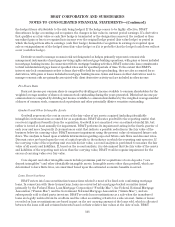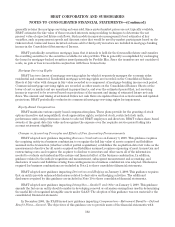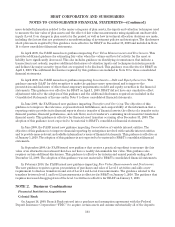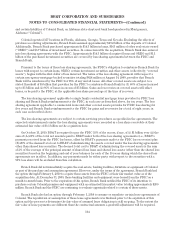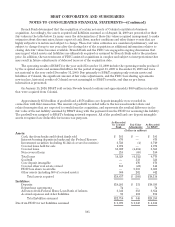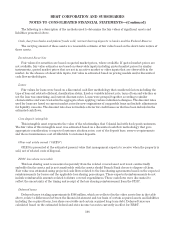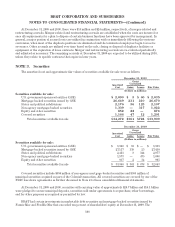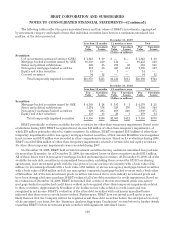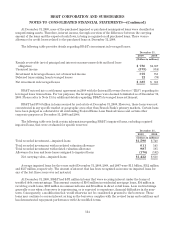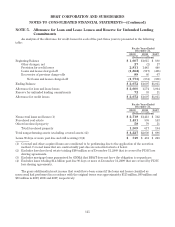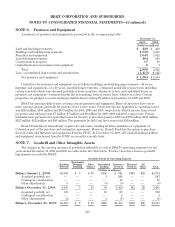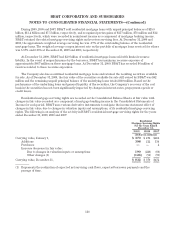BB&T 2009 Annual Report Download - page 111
Download and view the complete annual report
Please find page 111 of the 2009 BB&T annual report below. You can navigate through the pages in the report by either clicking on the pages listed below, or by using the keyword search tool below to find specific information within the annual report.BB&T CORPORATION AND SUBSIDIARIES
NOTES TO CONSOLIDATED FINANCIAL STATEMENTS—(Continued)
BB&T conducts periodic reviews to identify and evaluate each investment that has an unrealized loss for
other-than-temporary impairment. An unrealized loss exists when the current fair value of an individual security
is less than its amortized cost basis. Unrealized losses that are determined to be temporary in nature are
recorded, net of tax, in accumulated other comprehensive income for available-for-sale securities.
Factors considered in determining whether a loss is temporary include:
ŠThe financial condition and near–term prospects of the issuer, including any specific events that may
influence the operations of the issuer;
ŠBB&T’s intent to sell and whether it is more likely than not that the Company will be required to sell
these debt securities before the anticipated recovery of the amortized cost basis;
ŠThe length of the time and the extent to which the market value has been less than cost;
ŠWhether the decline in fair value is attributable to specific conditions, such as conditions in an industry or
in a geographic area;
ŠWhether a debt security has been downgraded by a rating agency;
ŠWhether the financial condition of the issuer has deteriorated;
ŠThe seniority of the security;
ŠWhether dividends have been reduced or eliminated, or scheduled interest payments on debt securities
have not been made; and
ŠAny other relevant available information.
For certain U.S. mortgage-backed securities (and in particular for non-agency Alt-A, Prime and other
mortgage-backed securities that have significant unrealized losses as a percentage of amortized cost), credit
impairment is assessed using a cash flow model that estimates the cash flows on the underlying mortgage pools,
using security-specific structure information. The model estimates cash flows from the underlying mortgage loan
pools and distributes those cash flows to the various tranches of securities, considering the transaction structure
and any subordination and credit enhancements that exist in each structure. The cash flow model projects the
remaining cash flows using a number of assumptions, including default rates, prepayment rates and recovery
rates (on foreclosed properties).
Management reviews the result of the cash flow model, internal credit analysis and other market observable
information in its estimation of possible future credit losses. If management does not expect to recover the entire
amortized cost basis of a mortgage-backed security, the Company records other-than-temporary impairment
equal to the amount of expected credit losses in the mortgage-backed security. The remaining amount of
unrealized loss is recognized as a component of other comprehensive income.
Where a mortgage-backed security is not deemed to be credit impaired, management performs additional
analysis to assess whether it intends to sell and it is more likely than not that the Company will be required to sell
these debt securities before anticipated recovery of the amortized cost basis. In making this determination,
BB&T considers its expected liquidity and capital needs, including its asset/liability management needs,
forecasts, strategies and other relevant information.
111


